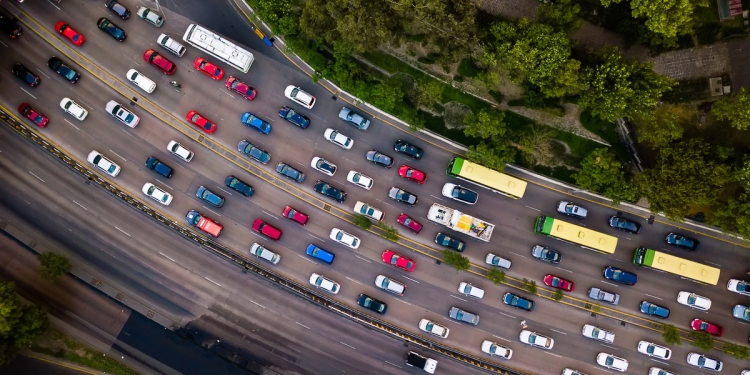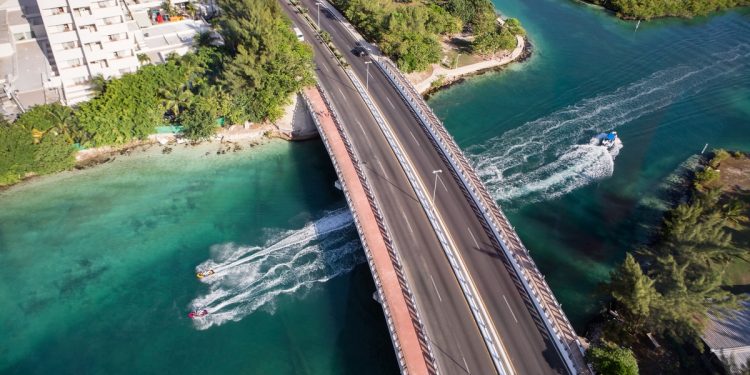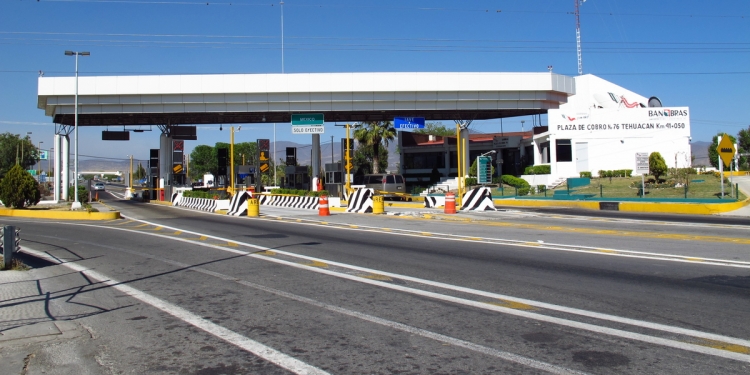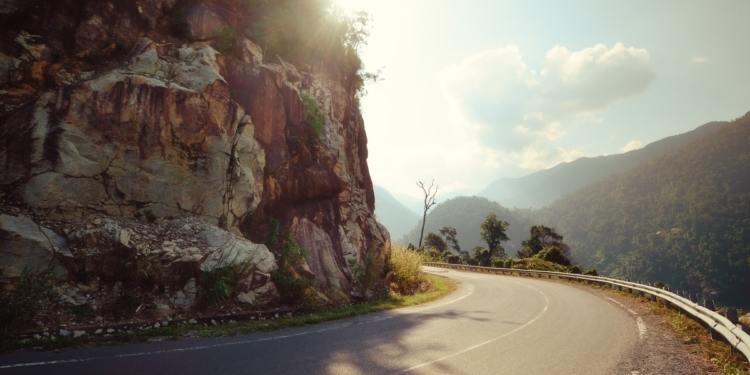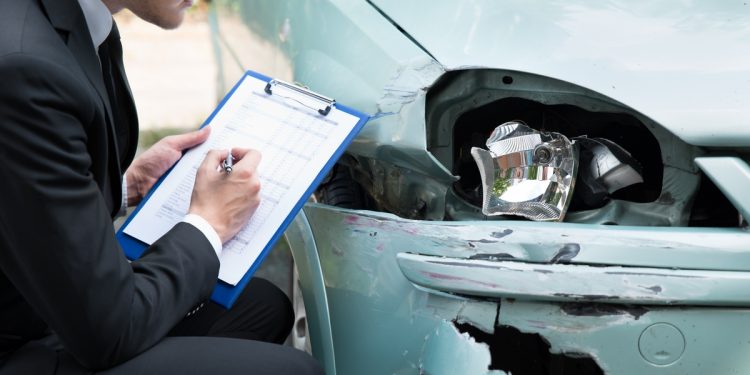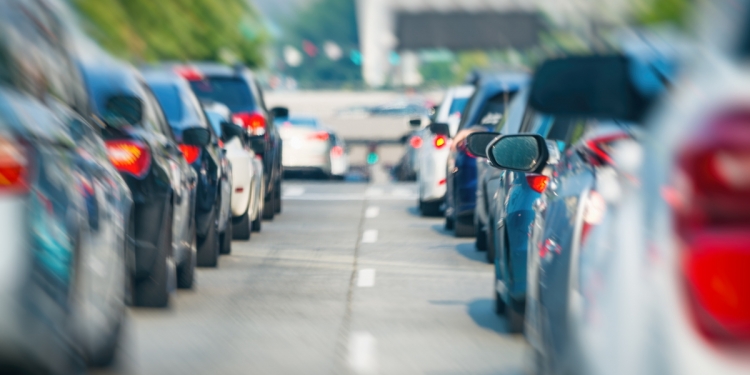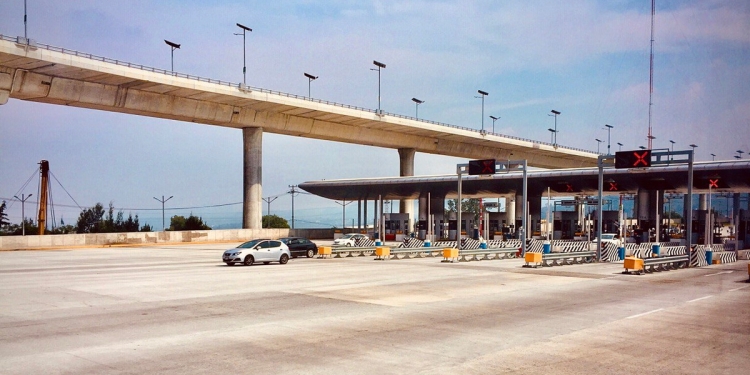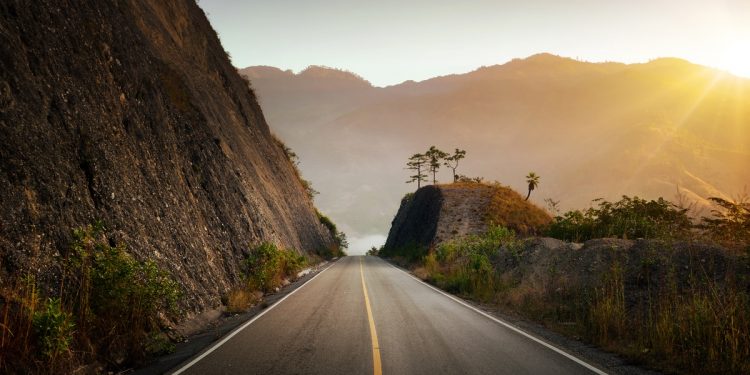Most road trips in Mexico pass by trouble-free. Some advance planning and foreknowledge will help you make your journey more enjoyable and mitigate any risks along the way.
Driving in Mexico City and environs
If you plan to drive your car in (or even just through) Mexico City or the State of Mexico, the ‘Hoy No Circula’ program —that limits the number of vehicles allowed to drive on the road each day— requires you to consider your journey plans. If you regularly travel into or through the capital, you might need to get your vehicle’s emissions ‘verified’ at a special testing station to avoid restrictions. Learn more on our article about Mexico’s Hoy No Circula vehicle restriction program.
Road quality and markings
The quality and state of repair of roads varies widely in Mexico.
Road conditions
Smaller and fringe roads can be under-developed or in disrepair. Watch out for pot-holes—some are bad enough that they will wreck your suspension and can leave you needing a new tire or wheel. Sometimes they are marked with a cone (or a rock painted white is also common), but sometimes they are just there and may be hard to see, especially at night.
Road markings and street lighting
Road markings may not be present. This makes driving tricky on remote dark highways or inside unlit provincial towns when you can’t see where the road edge ends. Road signs may not be lit up, and reflectors (“cat’s eyes”) are rare except on toll roads. If you’re traveling by car at night, it’s best to stay on a main highway (toll roads are best) or be in an area you know. See the ‘night driving’ section of this chapter for more details.
Local driving habits
Driving standards vary immensely; most non-commercial drivers in Mexico have little or no formal driver training. Drivers may not use their indicators nor be too amenable when it comes to letting other drivers into a line of traffic from a side road—even if the line isn’t going anywhere. You can get some insights into driving habits by reading a couple of articles by Foreign Native: Driving the Mexico City way and Road rage review.
Vehicle conditions
The vehicles you are sharing road space with may be in a higher state of disrepair than you might be used to in your home country, for example:
- Bald tires: On dry ground these are less dangerous, but in the wet they offer little resistance to skidding and severely lengthen braking distances. Be mindful of vehicles you pass or drive nearby that have balding tires, especially in wet road conditions, and/or when traveling at speed as bald tires are susceptible to sudden rupture and uncontrollable skidding.
- Absence of head lights or taillights, and malfunctioning break lights: Most drivers are conditioned to respond only to taillights; it’s good practice to observe the vehicle itself and create plenty of open space between your vehicle and the one traveling in front of yours.
- Brakes and breakdowns: Poorly maintained vehicles may be slower in breaking and may experience sudden malfunctions that cause them to conk out suddenly. Creating plenty of space between your vehicle and the vehicle in front —especially when travelling at speed— is an effective way to mitigate against the potential hazards posed by matters beyond your immediate control.
Notorious speed bumps, ‘Topes’
The word “topes” is Mexican Spanish for speed bumps, and they are a common feature on all Mexican roads in urban areas, and on federal highways (freeways) as they pass through small towns and villages.
Here are some insights and tips about topes as you drive along Mexico’s roads:
- some topes are worn out and behave like bumps in the road that you don’t notice anymore; and
- some are like brick walls that will visit considerable damage to your vehicle if you go over them at speed;
- if you’re renting a car, be especially aware of speed bumps as rental companies regularly check under the car for speed bump damage and will charge you for that;
- slow right down at all bumps and keep your speed down in urban and residential areas;
- topes are not installed on toll roads except near the toll booths and dangerous curves where ‘vibration’ topes are installed to alert the driver to slow down as the vehicle approaches the toll gate, or to force the vehicle to slow down on treacherous stretches or road bends;
- most topes are not signposted, and many are not marked out or painted, either;
- at night they can be effectively invisible.
Animals and cattle on the roads
Another important consideration when driving, day and night, is the presence of cattle and animals wandering into the roads.
Most highways (especially federal freeways) in Mexico do not have fences fitted either side of them where they cross ranches, farms, or areas where animals are left to graze alone. It’s therefore common for cows, sheep, chickens, dogs, and other animals to wander aimlessly into the middle of the road, irrespective of what may be traveling towards them.
Not only does this present a danger to your own vehicle (hitting a cow can cause severe damage to your car), but the event could also be a catalyst for a bigger accident involving several other cars; furthermore, the cattle or animal owners might appear and make a claim on you for lost livestock—and they tend to factor in potential ‘lost offspring’ to the claim amount!
Toll roads rarely have domestic animals or cattle wandering onto the highways, although it’s possible that it might happen, and in some areas wild animals and snakes might find their way onto the road, so be mindful of wildlife, even on tolled interstate highways.
Be extra vigilant of your surroundings especially as you pass through small towns and villages on free highways, or local link roads connecting highways, and as you drive alongside fields that have cattle or other animals grazing there.
Cyclists and pedestrians
Practice additional care and attention for cyclists and pedestrians when you’re driving in Mexico, whether you are in an urban area, a freeway, or a toll-road.
- Be vigilant for cyclists, especially at night: most won’t have lights fitted to their bikes and many cyclists don’t wear reflective clothing: in these cases the cyclists will be near-invisible until you come close to them. Cyclists use freeways (and link roads connecting freeways) and occasionally you might see a cyclist on a toll road. Give cyclists plenty of room as you pass them.
- In rural areas, and in small towns and villages, many locals walk home from work along the edge of local roads, freeways, and libramientos when there are no sidewalks. They may not be walking towards you, and most won’t be wearing anything bright and far less likely to be wearing reflective clothing.
- Slow down and give pedestrians plenty of room as you pass them. Also look out for pedestrians crossing busy roads of highways that split two sides of an urbanized area; pedestrian bridges are sometimes present but may not often be used, so don’t presume the pedestrians will be using them.
Night driving hazards
Driving at night in Mexico requires some additional precautions, especially if you’re only accustomed to night driving in the US or Canada. Here are the key points to note when driving at night in Mexico
Road quality and markings
The physical state of roads varies in Mexico, and not all roads —even some major roads— are well marked and signed. The surfaces of the roads may be worn, roads may not have lanes and/or edge limit markers painted on them, reflectors are uncommon on roads except for tolled highways, and signage may be absent or unlit. Slow down on dimly lit or poorly marked out roads, especially in the rain.
Lack of lighting
Some of Mexico’s roads, even tolled roads, cross vast expanses of rugged and remote territory making it impractical to light up. At night, in the absence of any nearby towns or villages (that give off light) and especially around the time of a New Moon, these areas can become especially difficult to navigate, and particularly so if you are on a non-tolled road that is poorly marked out. If you intend to drive overnight across rural or remote areas, ensure that your vehicle’s own lighting and mechanical systems are in excellent condition.
Night driving safety
We recommend that you drive only during daylight hours wherever possible—especially on longer road trips that traverse remote regions of Mexico. If you must drive overnight, we recommend you use toll roads, ensure that your vehicle’s mechanical and lighting systems are in excellent condition, and have plenty of fuel in your vehicle for your intended journey. Be especially vigilant for hazards (see above) including pedestrians, cyclists, and animals wandering on to the road.
Beware of GPS reroutes
Most drivers rely on GPS systems using Google Maps or some other electronic mapping app (Wayz is popular) to navigate road trips in Mexico.
In heavy traffic, or traffic jams, GPS systems might suggest a reroute to avoid the congestion. Take care with these, especially at night—some ‘reroutes’ might lead you into unsafe areas or dangerous neighborhoods, especially in bigger cities.
If you’re unfamiliar with the area, it’s better to wait out a traffic jam than take a ‘back route’ offered by a routing system leading into insalubrious areas that could pose a security risk to you and your vehicle.
Free guides to Driving in Mexico
For a complete reference guide to driving and road trips in Mexico, read our guides to Driving and Road Trips in Mexico.
Mexperience is pleased to refer our readers to MexPro auto insurance, which offers comprehensive coverages valid in Mexico using English-language policies backed by a fully-licensed US insurance broker. Their insurances cover third party liability, provide legal assistance, and you can opt for medical and roadside assistance to be included.
Get a quote now: Get an online quote, review your policy details, and arrange auto insurance for your road trip in Mexico.
Quote for Auto InsuranceLearn more about driving in Mexico
Mexperience offers articles with insights to help you prepare for your road trip and drive confidently in Mexico.

